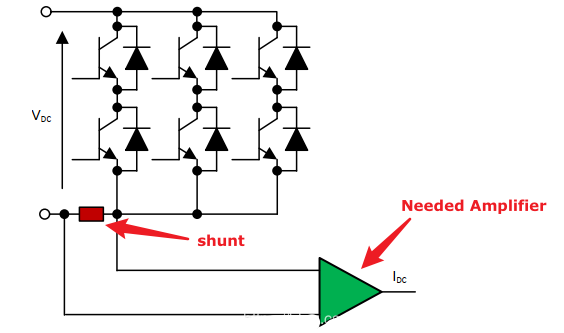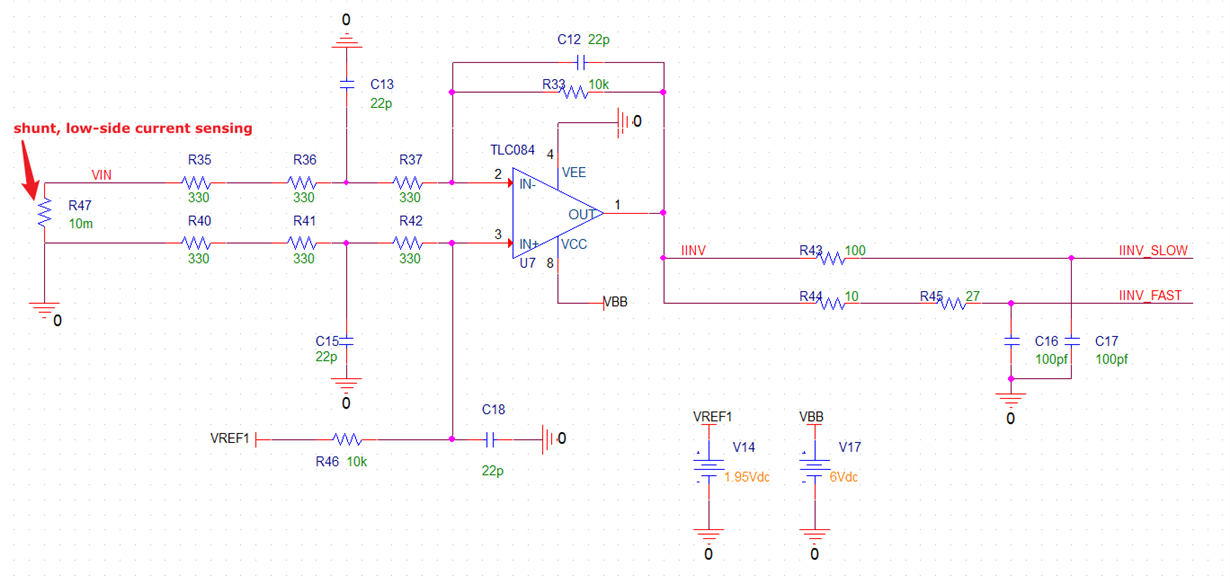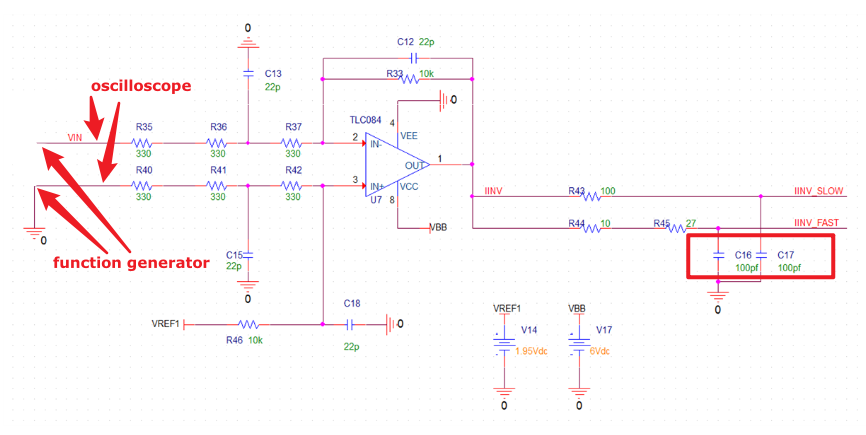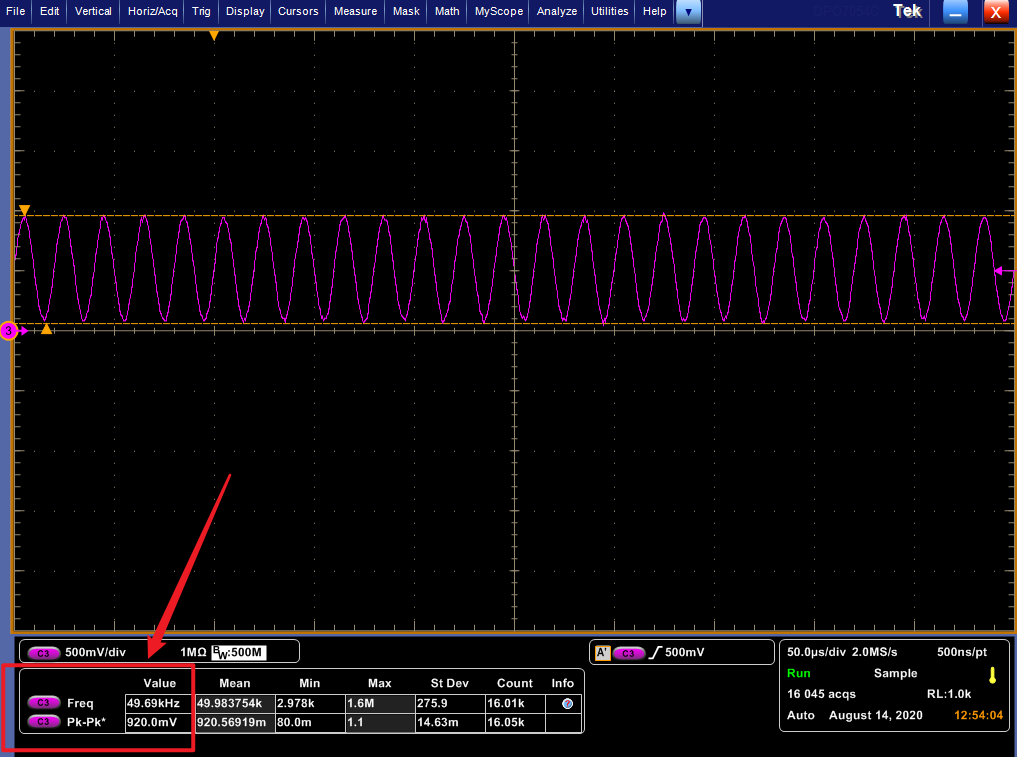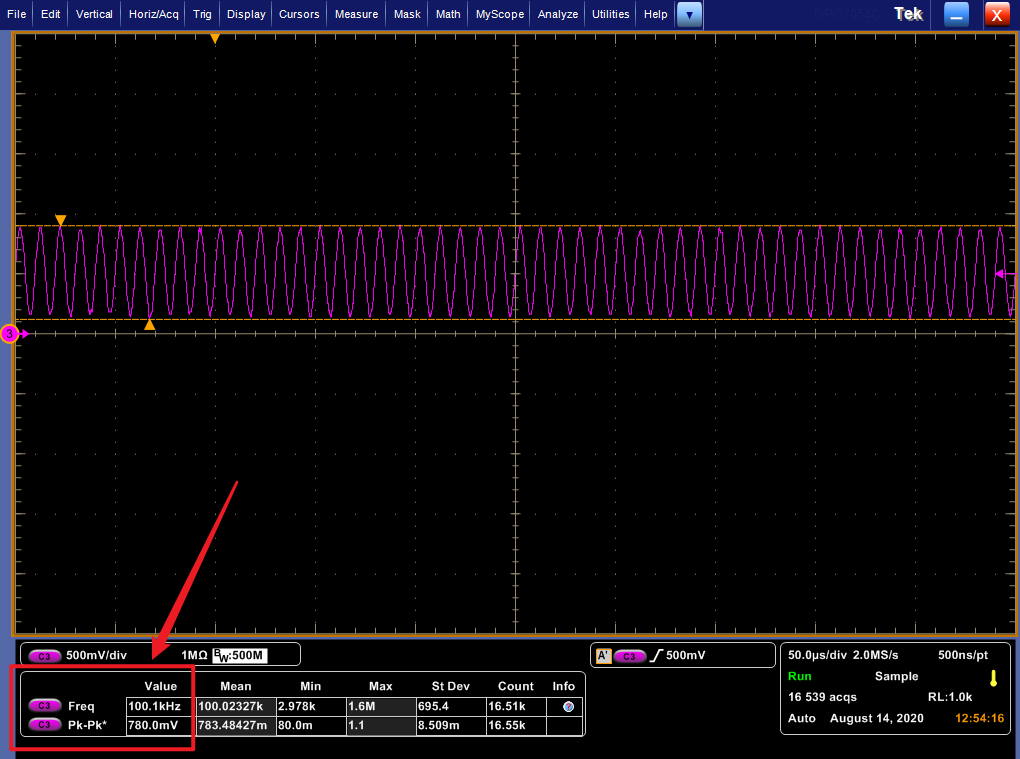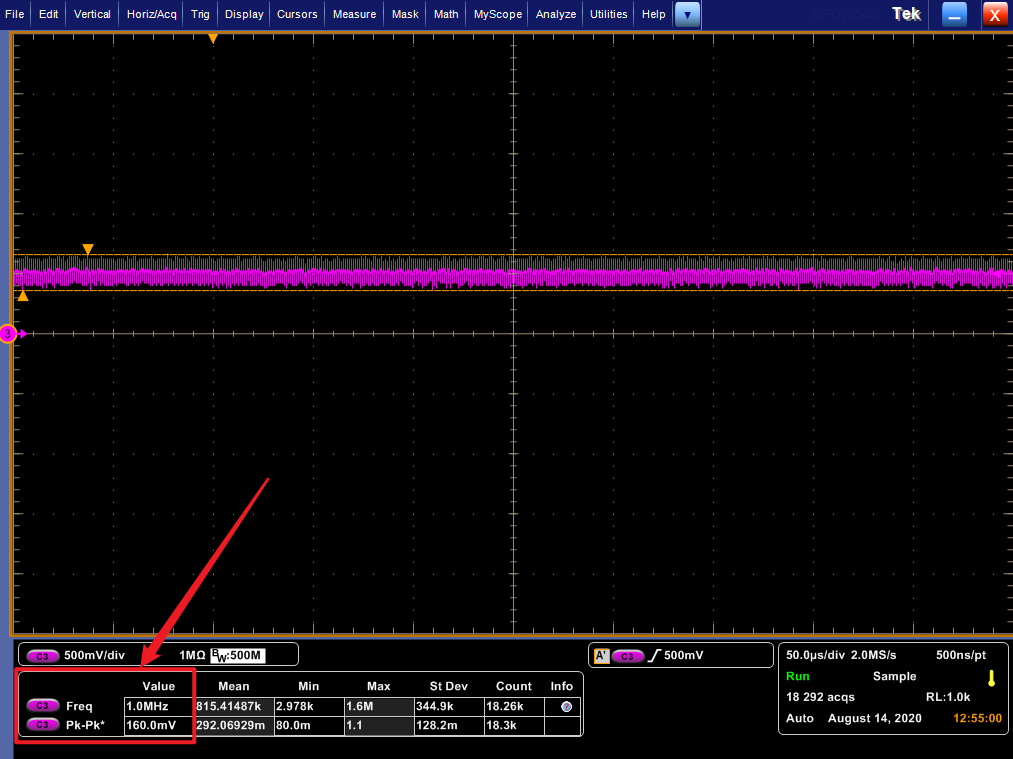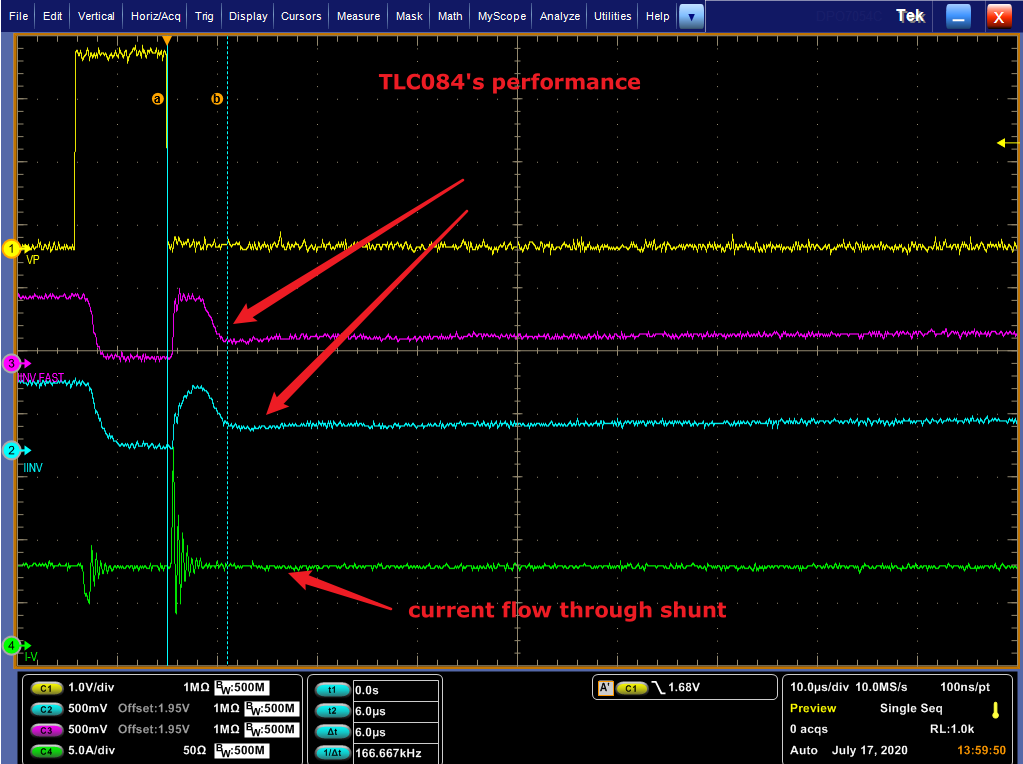Other Parts Discussed in Thread: TLV9002, TLV9062, TLV9104, TLC084, TINA-TI
Hi,
I would choose a cost-effective and widely used operational amplifier as a current sensor.
Below picture is my specific application scenario(frequency converter). please recommend some devices which such same application have used.
Currently, i can not match the parameter 'Slew Rate' and 'Bandwidth' to the actual performance. I do not know, what level should reach on 'SR' and 'GBW'.


